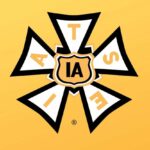If you are an educator, it is likely that you have heard of or used a learning management system (LMS). Have you looked into some of the new and enhanced LMS? These products offer numerous impressive features that improve the efficiency and effectiveness of your teaching experience. Let us explore four essential features that a next-generation LMS must possess.
Integral Features You Must Have In A Next-Generation LMS
Firstly, it is important to acknowledge that online learning has become a fundamental aspect of education. Online courses and virtual classrooms have become the standard. It is important to select an LMS, like iSpring Learn, with key features integrated into its functionality. There are four crucial components.
Cloud-Based Delivery
Cloud-based delivery means delivering services, applications, and resources over the internet using cloud computing technology. It involves the use of remote servers hosted.
In today’s world, many aspects of our lives rely on cloud technology. This includes file sharing and website hosting. The aforementioned applies to the delivery of educational content via Learning Management Systems. In the past, teachers had to install specific hardware or software systems on their computers, laptops, or smartphones to access these resources. However, those days are now gone.
Next-generation LMSs offer cloud-based delivery mechanisms. Students and teachers can conveniently access course materials anytime and anywhere with an internet-connected device like a laptop or smartphone. Storing your data securely in the cloud ensures that it is backed up, guaranteeing against critical data loss in case of any issues elsewhere.
Indeed, one can greatly benefit from the convenience of accessing class material at any time. Streamlining lesson planning and reporting tasks makes them much easier and stress-free. Utilizing cloud computing technology makes this possible.
Interoperability
The term “interoperability” refers to the ability of different systems to work together smoothly without any hindrance or errors. This includes communication protocols and high-level languages, among other factors. The use of jargon appears excessive.
ADVERTISEMENT
Imagine using various software applications to operate and manage your e-learning tools. The VLE, powered by textbooks, operates alongside MOOC platforms that offer the same course content.
Each software offers valuable input that students find helpful when accessing their virtual classroom. These inputs can be accessed without any disruption or difficulty.
To operate successfully, it is essential to have seamless interaction among all these platforms. This allows for the management of everything from a single dashboard. This guarantees simplified management, thereby decreasing the workload and significantly enhancing efficiency for educators.
Flexible Way of Teaching and Engaging Students
Currently, students have surpassed traditional pedagogical techniques. The future heavily relies on personalized learning. This means that each student’s needs are met through customized teaching methods. These methods are implemented using innovative technology strategies integrated into a Learning Management System (LMS) platform.
Indeed, you have heard me correctly. An LMS offers features such as interactive quizzes and videos. These features provide enjoyable and engaging ways to learn by incorporating gamification elements. For example, students can earn badges for improving their grades, encouraging them to participate in extracurricular study sessions after mastering a specific skill.
In our current information-driven world, it is essential to have flexibility in education and training programs. This allows for the effective adaptation of new ideas and the accurate conveyance of information. Focusing on learning new skills effectively rather than solely memorizing technical concepts is important.
ADVERTISEMENT
Student Retention, Monitoring, and Intervention Tools
Instructors require reliable ‘rearview’ mirror technologies that display metrics on learner progress, such as dropout rates and engagement levels. These types of data indicate the effectiveness of instructors in assisting learners to succeed in their classes.
These capabilities are made possible by maintenance interventions provided as supplementary resources through modern LMSs. These interventions include academic-based study groups and enrichment sessions. They aim to improve teacher-student communication with underperforming students through online lessons or face-to-face interactions. Overall, these interventions contribute to the development of performance.
Conclusion
Here are the four essential features that a next-generation LMS must have. The features include cloud-based delivery, interoperability, flexible teaching methods, student engagement, and tools for monitoring student retention. Selecting an LMS can be overwhelming because each one offers unique benefits. Hopefully, this post has provided enough information about choosing an LMS for your educational needs.









